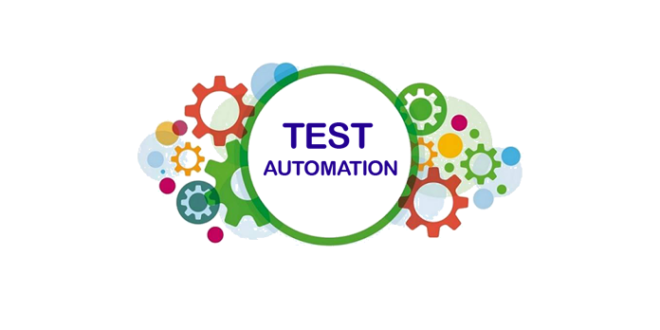Automation Testing Approaches: Best Practices for Seamless Integration
Automation Testing Approaches: Best Practices for Seamless Integration
Blog Article
Guaranteeing Success in Automation Testing: Secret Metrics, Obstacles, and Solutions Every QA Team Need To Know
In the realm of software top quality assurance, the landscape of automation screening is ever-evolving, demanding a meticulous strategy to ensure smooth operations. The journey to grasping automation testing is paved with subtleties that require an eager eye for monitoring, evaluation, and continuous renovation. As the sector propels ahead, the mission for ideal efficiency in automation testing continues to be a constant pursuit, urging QA groups to outfit themselves with the knowledge and methods necessary for victory.
Value of Key Metrics
Recognizing the significance of crucial metrics is vital for examining the efficiency and performance of automation screening procedures. Trick metrics act as quantifiable procedures that supply useful understandings right into different elements of the screening procedure, such as test protection, examination execution time, defect thickness, and examination situation efficiency. By examining these metrics, QA groups can determine traffic jams, inefficiencies, and locations for enhancement within their automation testing structure.
One vital element of vital metrics is their capability to track progress and check the overall health of the testing process (automation testing). They make it possible for stakeholders to make educated decisions based upon data-driven insights, which can result in a lot more effective testing techniques and better resource appropriation. Furthermore, key metrics can aid teams established reasonable objectives, gauge the success of automation campaigns, and show the ROI of automation screening initiatives

Common Obstacles Dealt With
Difficulties generally come across in automation screening processes can dramatically affect the overall efficiency and effectiveness of QA teams. One of the significant difficulties is the selection of the right test situations for automation. Not all test situations appropriate for automation, and choosing the incorrect ones can lead to wasted time and resources. Furthermore, preserving examination scripts can be a daunting task, particularly as the application undertakes frequent changes. Test script upkeep calls for continual updates and modifications to guarantee they show the existing capability properly. An additional common challenge is the preliminary financial investment required for setting up automation frameworks and devices. This can be a barrier for some organizations, especially smaller ones with restricted budgets. In addition, automation testing might not cover all elements of testing, such as usability and customer experience testing, which still call for manual treatment. Overcoming these obstacles needs correct planning, calculated examination situation choice, durable upkeep processes, appropriate resources, and a clear understanding of the limitations of automation screening.
Efficient Solutions for Challenges
To address the challenges run into in automation testing, carrying out efficient services is vital for enhancing the performance and efficiency of QA teams. One key solution is to purchase durable training programs for QA teams to guarantee they have the needed skills to efficiently utilize automation devices. Training can connect knowledge voids, enhance understanding of automation frameworks, and improve scripting capabilities, ultimately bring about a lot more efficient examination development and implementation.
One more vital remedy is to establish clear communication networks within the QA team and with various other stakeholders, such as developers and task managers. Reliable communication aids in lining up expectations, sharing development updates, and promptly resolving problems or roadblocks that may arise throughout the automation testing process.

Monitoring and Evaluation Strategies
Implementing efficient surveillance and analysis techniques is crucial for making sure the success and efficiency of automation screening procedures. Additionally, assessing test results and metrics provides useful understandings into the high quality of the software being evaluated and the performance of the screening technique.
One secret technique in tracking and evaluation is the use of dashboards that settle relevant metrics and KPIs in a visually easily accessible layout. These dashboards use a thorough summary of test implementation standing, examination coverage, flaw fads, and various other vital information. Consistently assessing and assessing these dashboards can aid QA groups make educated choices, focus on tasks, and enhance testing efforts.
Moreover, applying automated alerts and notifications based on predefined thresholds can enhance proactive monitoring and timely intervention. By establishing up alerts for performance discrepancies or test failures, teams can address issues promptly and prevent them from rising. Overall, surveillance and evaluation strategies play an essential function in ensuring the performance and success of automation screening campaigns.
Constant Improvement Approaches
Enhancing the efficacy of automation screening procedures requires the consistent refinement of methodologies and strategies. Continual enhancement techniques are pivotal for QA groups to adjust to advancing technologies and deliver premium software application products. One essential method to boosting automation screening procedures is to conduct normal evaluations and retrospectives. By evaluating previous screening cycles, groups can identify bottlenecks, inadequacies, and locations for enhancement. Carrying out feedback loopholes and including lessons found out into future screening frameworks can generate significant renovations in time.

Verdict
Finally, it is important for QA teams to comprehend the essential metrics, obstacles, and options in automation testing to make certain success. By very carefully keeping an eye on and analyzing information, carrying out effective options to common obstacles, and constantly boosting techniques, QA groups can optimize their testing procedures and provide high-quality software. Sticking to these techniques will eventually bring about much more efficient and reliable automation screening methods.
By analyzing these metrics, QA groups can determine traffic jams, inefficiencies, and locations for enhancement within their automation screening framework.
Furthermore, vital metrics can help teams established practical goals, determine the success of automation campaigns, and show the ROI of automation testing efforts.
Difficulties generally encountered in automation testing processes can dramatically impact the general you can find out more performance and performance of QA teams. Automation screening might not cover all facets of testing, such as use and individual experience testing, which still need hands-on treatment.In verdict, it is crucial for QA check out here teams to understand the essential metrics, difficulties, and options in automation screening to make certain success.
Report this page